Senior Pet Smiles: The Ultimate Guide to Dental Care for Aging Dogs and Cats
At Woodland Springs Veterinary Hospital in Fort Worth, Texas, we know how much your pet means to you—especially as they grow older. Just like in people, dental health becomes increasingly important as pets age, and neglected teeth can lead to much more than just bad breath. In this guide, we’ll walk you through everything you need to know about dental care for senior dogs and cats, from prevention to treatment and what you can do at home.
Why Dental Health Matters More as Pets Age
Do senior pets really need dental care?
Yes—and urgently. As pets age, years of plaque buildup, gum inflammation, and untreated dental issues can catch up quickly. Senior pets are at much higher risk for:
- Periodontal disease
- Tooth loss
- Oral pain
- Fractured teeth
- Systemic infections
Chronic dental disease in older pets is not just a localized problem. Bacteria from inflamed gums can enter the bloodstream and spread to critical organs like the heart, liver, and kidneys, contributing to or worsening chronic conditions.
Pro Tip: Most dogs and cats over the age of 3 already show signs of dental disease. In seniors, those issues are often more advanced and harder to reverse.
Oral Health is Whole-Body Health
It’s easy to overlook dental hygiene when pets are still eating and acting normally—but that doesn’t mean everything is fine.
What happens if you don’t treat dental disease in senior pets?
Untreated dental problems can cause:
- Chronic pain – pets often suffer silently
- Nutritional deficiencies – due to difficulty chewing
- Organ damage – from oral bacteria in the bloodstream
- Weight loss and behavior changes
Dental disease isn’t just uncomfortable; it can shorten your pet’s life. That’s why oral health is an essential part of every senior wellness plan at Woodland Springs.
Common Dental Problems in Senior Dogs and Cats
Below are the most frequently diagnosed dental issues in older pets and what you can do about them:
1. Periodontal Disease
“By the time most dogs or cats reach their senior years, they have some degree of periodontal disease.” – American Veterinary Dental College
- What it is: Inflammation and infection of the tissues surrounding the teeth
- Symptoms: Bad breath, red/swollen gums, visible tartar, pawing at mouth, drooling
- Treatment: Professional dental cleaning, scaling, and possible extractions
2. Tooth Loss
- What causes it: Advanced gum disease or bone loss
- Signs: Missing teeth, difficulty chewing, food dropping from mouth
- Management: Soft food, tooth extractions, pain control
3. Fractured Teeth
- Causes: Chewing on hard toys, trauma, or decay
- Symptoms: Drooling, bleeding, reluctance to eat, face sensitivity
- Treatment: Extraction or root canal
Learn more about fractured teeth in pets
4. Oral Masses or Tumors
While not always malignant, oral growths become more common with age. Any unusual lump, bleeding, or sudden oral change should be evaluated promptly.
5. Halitosis (Bad Breath)
Persistent bad breath is never normal—it’s often the first clue to infection or decay. If you’ve noticed your pet’s breath is worse than usual, schedule a dental exam.
At-Home Dental Care for Senior Pets
Dental care doesn’t stop at the vet clinic. Here are the most effective ways to help your aging pet at home:
Brushing Your Pet’s Teeth
Is it really necessary to brush a senior pet’s teeth?
Yes. Brushing once daily is the gold standard for plaque control. Use:
- A pet-safe toothbrush (not a human one)
- Enzymatic toothpaste made for dogs or cats
Step-by-step brushing guide
Start slow—gradually introduce brushing to reduce stress and increase acceptance.
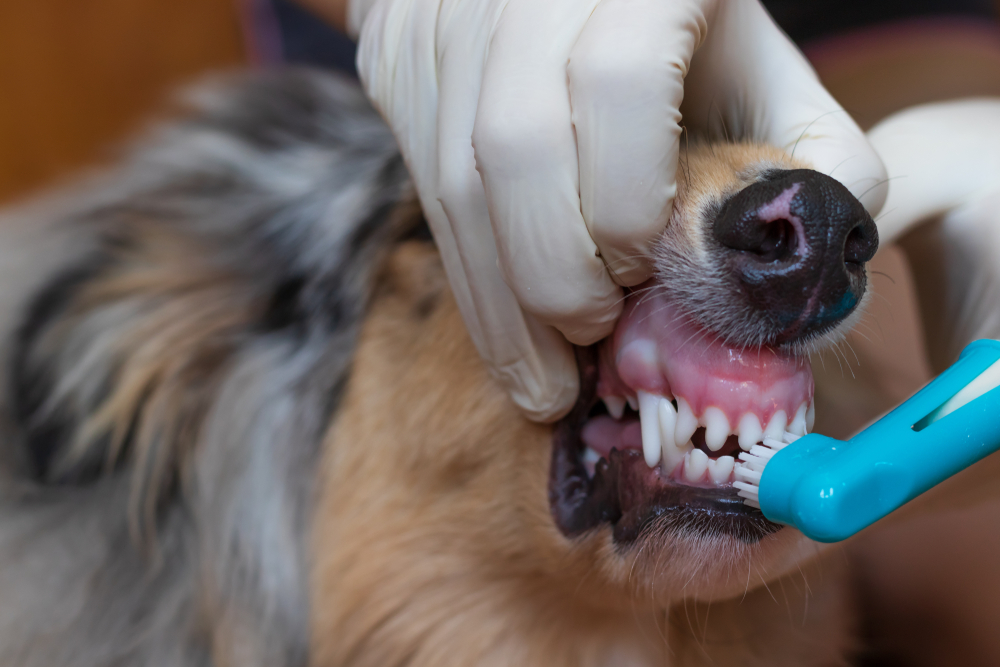
Dental Chews and Toys
Dental chews can help, but not all are created equal.
- Look for products with the VOHC seal (Veterinary Oral Health Council)
- Avoid bones, antlers, or hooves—these are major tooth fracture risks
Potential dangers of popular dog chews
Diet and Water Additives
- Dental diets: Specially formulated kibble can help scrape plaque from teeth
- Water additives: Help reduce bacteria and freshen breath, though not a substitute for brushing
“A comprehensive approach—including diet, dental chews, and brushing—is the most effective at-home dental strategy.” – VOHC
Professional Dental Care at Woodland Springs
We recommend yearly dental cleanings for senior pets—or more frequently if your veterinarian identifies issues.
Comprehensive Dental Exams
Every dental appointment includes:
- Oral examination under sedation
- Full-mouth dental radiographs
- Evaluation of gum and bone health
Why dental X-rays matter
Professional Cleaning and Scaling
Under anesthesia, we’re able to:
- Remove plaque above and below the gumline
- Polish teeth to slow plaque reattachment
- Perform any necessary extractions
Anesthesia is required to do a thorough job safely and pain-free. We use the safest anesthetic protocols, especially for senior pets.
Advanced Treatments
- Extractions: For broken or infected teeth
- Root canals: Occasionally an option for saving strategic teeth
- Pain control and post-op care: Carefully tailored for each pet’s needs
Preventing Future Dental Problems
Build a Routine
- Brush your pet’s teeth daily
- Use VOHC-approved chews and water additives
- Schedule annual cleanings and exams
Monitor for Warning Signs
Be alert to:
- Bleeding or inflamed gums
- Reluctance to chew
- Pawing at the mouth
- Bad breath
- Dropping food
Early detection is key. If you notice anything unusual, give us a call.
Keeping That Senior Smile Healthy
A healthy mouth helps your senior pet live longer and feel better. Whether it’s brushing at home, choosing the right diet, or scheduling a professional cleaning, every step makes a difference.
If your pet is overdue for a dental exam—or you’re not sure where to start—we’re here to help. Contact our team to learn more.
Recommended Resources
- Veterinary Oral Health Council – Approved dental products
- Don’t Chew On This! – AAHA guide on safe dental toys


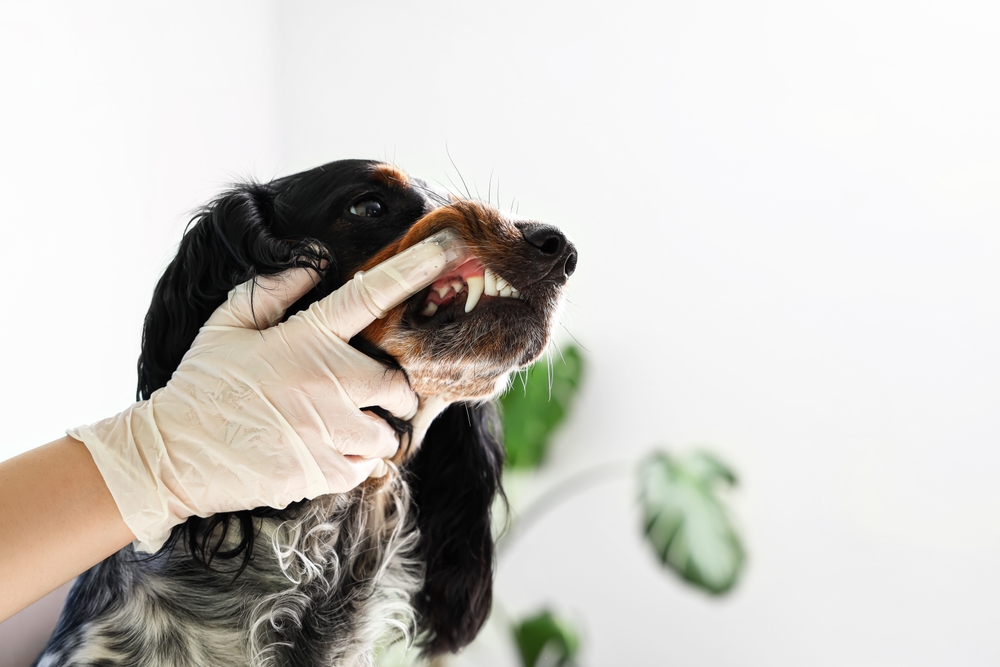

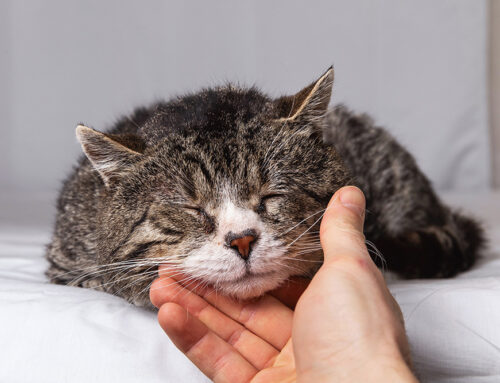
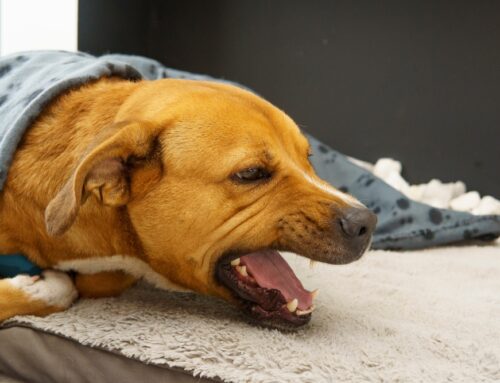
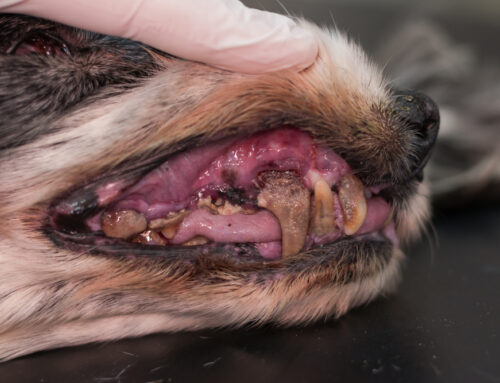
Leave A Comment